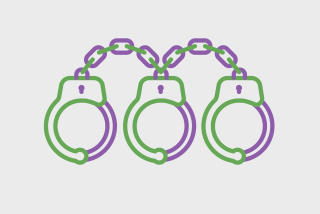Take Initiative on Ballot Measures
- Share via
California voters should prepare for a sore arm when they go to the polls March 7. They not only will face their second encounter with the long open-primary ballot, they likely will also be looking at 21 ballot measures, including the state’s first referenda in 18 years.
The ballot may not spark the emotions that Proposition 187 (illegal immigration) and Proposition 209 (affirmative action) provided in the recent past, but there will be some heat. Conservatives are rallying behind Proposition 22, the “definition of marriage” initiative sponsored by Sen. William “Pete” Knight (R-Palmdale). The controversial measure declares that only a marriage between a man and a woman is valid in California whether performed here or in any other state.
The 2000 ballot could also produce big-spending campaigns for some divisive measures. Indian tribes will wage an active campaign on behalf of Proposition 1-a, the compact worked out by Gov. Gray Davis, the Legislature and California tribes to govern Indian gambling in the state.
Propositions 12 through 16 seek approval of state bond issues totalling $4.7 billion, including $2.1 billion for parks and wildlands.
Eight measures have reached the ballot through initiative petition, California’s form of direct democracy. Four other measures were put on the ballot by the Legislature.
Will voters rebel at the long list of measures? Hard to say. In 1990, voters were in an angry mood, rejecting 20 of 22 measures. Of a dozen initiatives on the November 1988 ballot, six passed and six failed.
The three referenda expected to be on the March ballot seek to overturn laws passed by the Legislature in 1998 and 1999. This will be the first time since 1982 that a referendum has appeared on the ballot. Then, voters rejected a law that provided for construction of a canal around the Sacramento-San Joaquin Delta to pump fresh water southward to farms and homes.
Generally over the years, Californians have exhibited sound judgment as they picked through long lists of ballot measures. With the primary election occurring earlier than ever in 2000, they may want to get a head start on studying the ballot measures rather than wait for the overly simplified, often misleading television advertising that usually dominates the final days of a campaign.
More to Read
Get the L.A. Times Politics newsletter
Deeply reported insights into legislation, politics and policy from Sacramento, Washington and beyond. In your inbox twice per week.
You may occasionally receive promotional content from the Los Angeles Times.










